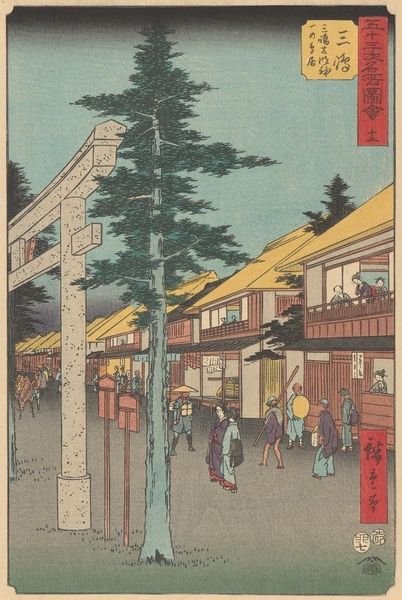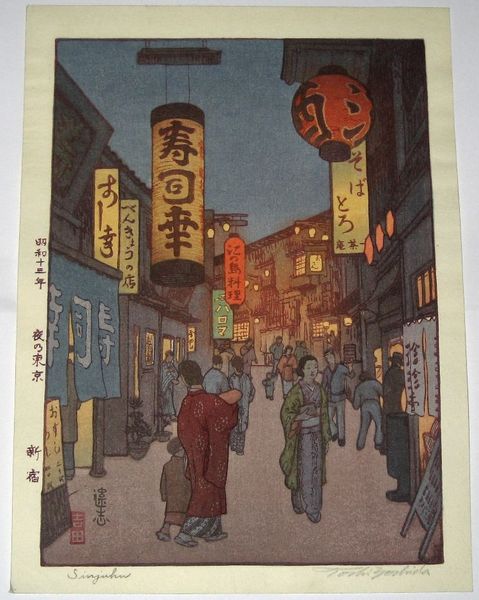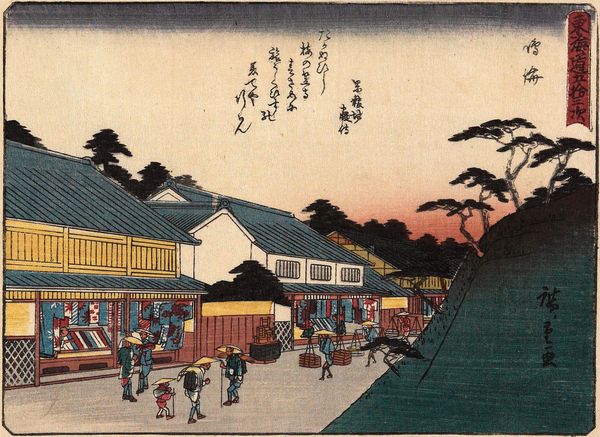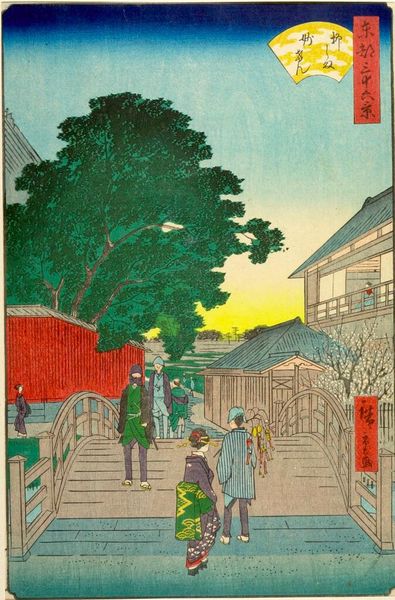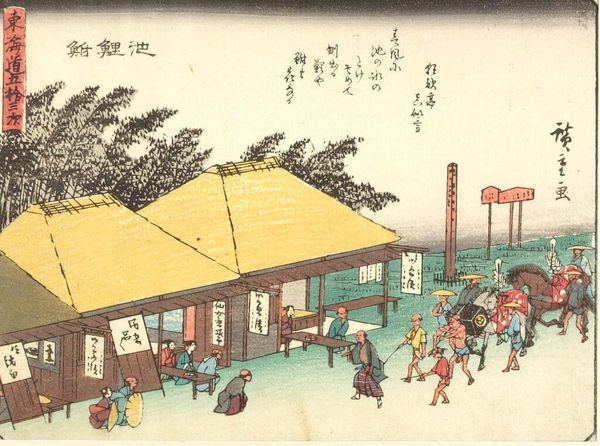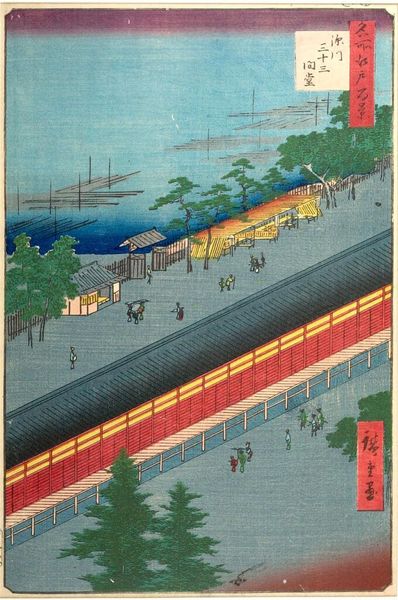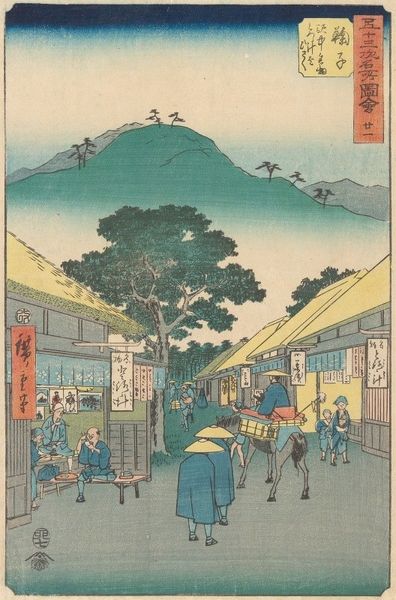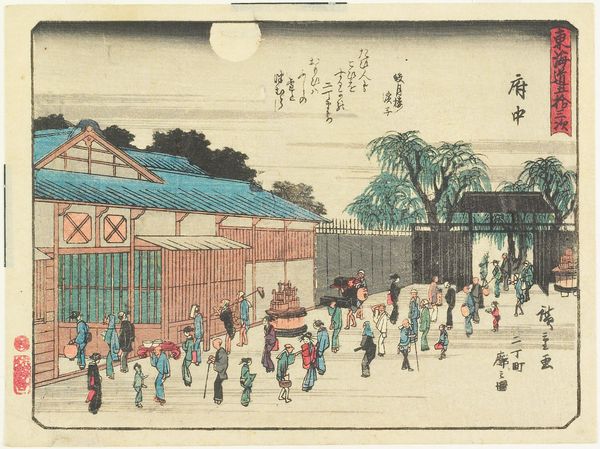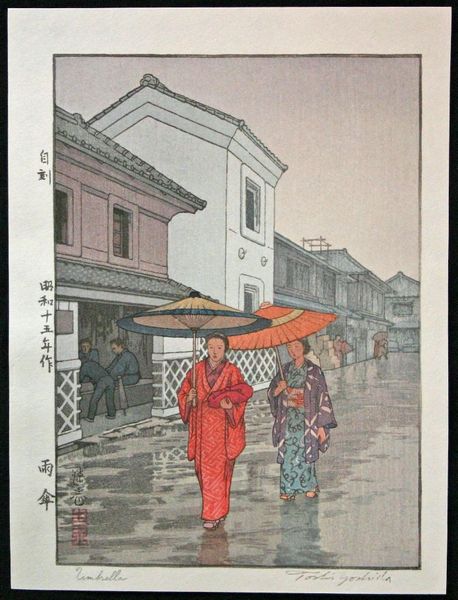
print, ink, woodblock-print
# print
#
asian-art
#
landscape
#
ukiyo-e
#
ink
#
woodblock-print
#
cityscape
Dimensions: 13 7/16 x 8 11/16 in. (34.1 x 22 cm) (image)14 1/2 × 10 in. (36.8 × 25.4 cm) (sheet, vertical ōban)22 1/16 x 17 15/16 in. (56 x 45.6 cm) (mat)
Copyright: Public Domain
Utagawa Hiroshige’s woodblock print, *Night View of Saruwaka-machi*, invites us into the bustling theater district of Edo, now Tokyo. Created during the Edo period, a time of relative peace and flourishing urban culture, this print captures a moment in the lives of the city's inhabitants. Notice the figures in the foreground: How their identities might be shaped by the sociopolitical structure of the time? In this period, social mobility was restricted, and one's class dictated their roles and opportunities. The people depicted are likely merchants, artisans, and performers who frequented this district. What can we tell about the relationship between gender and class from their clothes and accessories? Hiroshige masterfully uses light and shadow to create a sense of depth and atmosphere, almost blurring the boundaries between observer and observed. Consider how Hiroshige uses color to evoke a specific mood or emotional response. This print invites us to reflect on the vibrant, complex social fabric of Edo and the many identities that animated it. It reminds us that art, like life, is often found in the interplay of light and shadow, joy and sorrow, individual and collective experiences.
Comments
minneapolisinstituteofart almost 2 years ago
⋮
After the fire of 1841, a new theater district was established to the northeast of Asakusa Kannon Temple known as Saruwaka Street, after Saruwaka Kanzaburo, the founder of the first Kabuki theater in Edo over 200 years earlier. In this print, Hiroshige illustrates three theaters on the west (right) side of the street, identified by the boxed turrets that project above the eaves of the buildings. Tea houses and puppet theaters are located on the east (left) side of the street. Hiroshige's dramatic use of Western one-point vanishing perspective for this print is unique among the 118 prints of the series. The relative darkness of the Kabuki theaters suggests that the season has not yet begun. This, together with the shadows of the people cast by the moonlight, give the print a hauntingly quiet impression, quite at odds with the typical bustling atmosphere associated with Saruwaka Street.
Join the conversation
Join millions of artists and users on Artera today and experience the ultimate creative platform.

